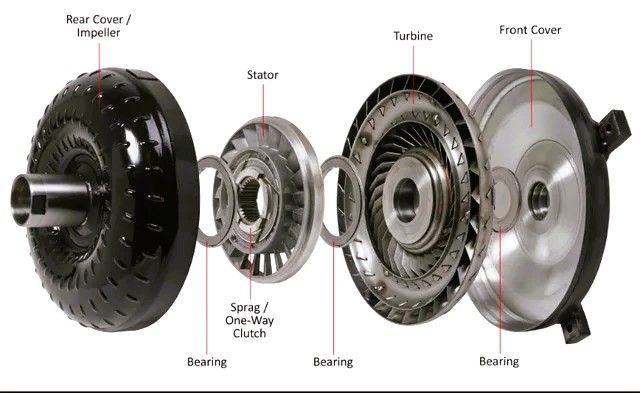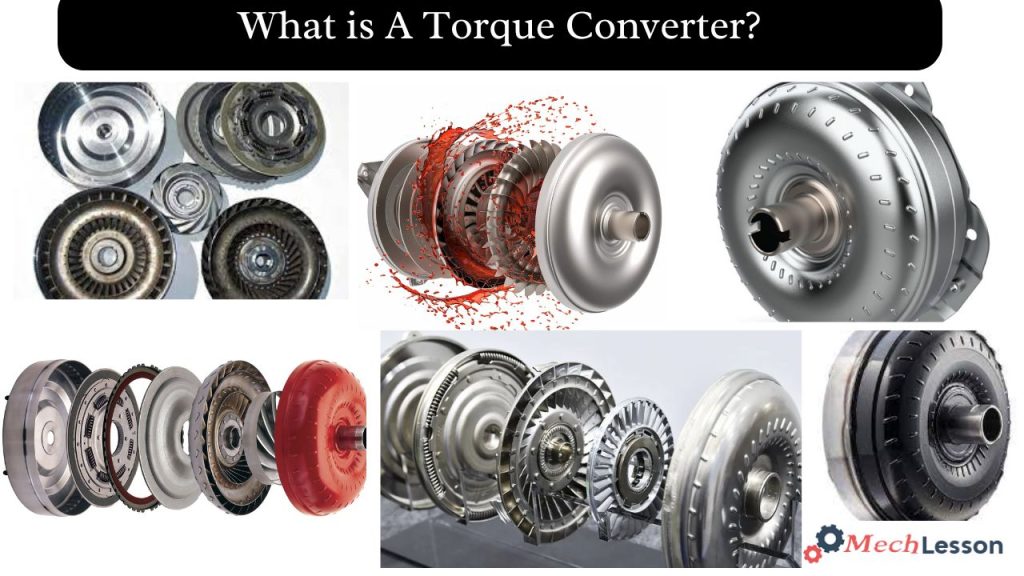Yes, welcome back, technicians, DIYers, and auto students. Today, we’ll be discussing a very interesting topic: “TORQUE CONVERTER.” As an auto technician, it is mandatory to know the importance of a torque converter in a car, its symptoms, and its replacement cost.
Today an old client of mine came with his car to my garage with this weird sound and acceleration. His transmission fluid was extremely hot, and I also experienced gear slippage. So I suggest we do a complete service on the torque converter, basically his transmission system.
I thought I should share this with my auto colleagues and how i go about it.
Let’s begin!
Learn about the Best Rust Converters & Inhibitors with this detailed guide!
What is A Torque Converter?
The torque converter, a mechanical engineering marvel that transmits engine power to the transmission’s input shaft, lies in the centre of every vehicle with a manual transmission. The engine may rotate relatively independently of the gearbox thanks to this hydraulic connection, which replaces the role of the clutch found in manual transmissions.
To further explain, a torque converter is a fluid coupling that allows an engine to function independently of the wheels when it is stopped by transferring rotational power from the engine to a rotating load, such as the gearbox in an automatic car.
You should also know that the symptoms of a bad torque converter vary depending on the following: vehicle model, year, and type.
It is a crucial part of the vehicle, transferring power from the engine to the transmission using automatic transmission fluid.
If it were to fail or go bad, it would cost quite a penny to fix, especially if it’s left like that for a while without knowing the symptoms. That’s why you need to know the signs of a bad torque converter.
Your automobile wouldn’t move without it. The torque converter improves the engine’s torque, which leads to easier acceleration from a stop. A torque converter can go bad for a variety of reasons, and these issues can lead to poor performance, reduced fuel efficiency, and even complete transmission failure.
Watch the video below to learn the difference between torque and horsepower. This will give you a clear understanding of the difference between the two.
How it Works
A torque converter is a complex solution to the problem of keeping the engine and transmission spinning independently. It uses fluid coupling and a series of clutches and turbines to drive the turbine, keeping the transmission spinning independently from the engine.
The torque converter consists of key parts: housing, fins, pump, and impeller. The housing and fins are attached to the flywheel, ensuring they always spin at the same speed as the engine. The pump cycles the transmission oil by forcing it to the outside and drawing more in at the center using a vacuum. This forces the transmission oil into the impeller, which powers the transmission independently from the engine.
The converter, resembling an industrial salad spinner, is sealed and enclosed, making it difficult to see inside. Instead of using water, which is easily compressed under high pressure, transmission oil drives the turbine.
When cruising at 50mph, 6th gear, at 2900 rpm,the transmission is spinning at the same speed as the engine. In a manual vehicle, the clutch is used to separate the transmission from the engine, preventing stalling. In an automatic vehicle, this is not possible, so the torque converter comes into play.
Diagram

Symptoms of a Bad Torque Converter
The signs of a bad torque converter include
1. Dirty transmission fluid
When a transmission fluid becomes contaminated with dirt, particles, and debris, it can reduce its efficiency of lubrication. This can result in overheating and increase the level of friction within the torque converter.
2. Automatic transmission fluid leaks
The fluid level will drop drastically when there is a leak from the torque converter’s seals, gaskets, or transmission fluid lines. This will also result in overheating and impact the overall performance of the system.
3. Clutch slipping
An automatic transmission system does not contain a clutch pedal, but it does have a clutch pack. If these clutches wear out or break, it can lead to slipping, shuddering, or loss of power transfer.
4. Overheating
When the transmission fluid of the torque converter is not properly cooled, the system can overheat. This can lead to complete breakdown and damage the component.
5. Rough acceleration
Low and dirty transmission fluid in the torque converter can lead to jerky gear shifts and delay in its engagement during acceleration. This issue can also be caused when the internal transmission parts are worn, causing the vehicle to speed up smoothly.
Learn about Causes, Symptoms and Maintenance of a Driveshaft with this detailed guide!
6. Gear slippage
Gear slippage can occur if there is low transmission fluid in the system and it may feel like the car is changing gear for no reason. Worn clutches or bands can also result in slippage.
7. Gear shift problems
Bad valves and solenoids can hinder hydraulic pressure and flow with the torque converter. This can result in poor performance and erratic shifting.
8. Rough idling
Contamination is one of the major causes of a rough idle. Other torque converter parts, such as the stator, can also result in rough idling when they go bad. This can make the experience bumpy, shaky, and unstable.
How do I prevent a torque converter failure?
Employing the right driving techniques and driving the right car can save you a lot of hassle and unplanned expenses. Here are some steps you can take to prevent torque converter issues:
- Use the right transmission fluid
- Always check transmission fluid levels
- Notice your driving habits
- Use parking brake
- Do regular checks
How Much Does It Cost to Replace a Torque Converter?
The cost of replacing a torque converter is higher than expected. The converter itself is cheap, but the labor is extensive, as either the engine or transmission (or both) needs to be completely removed.
It’s less expensive for rear-wheel-drive vehicles compared to front-wheel-drive or four-wheel-drive, as the transmission can be removed more easily while the vehicle is on a lift or jack stands.
Transmission slippage, a shuddering sensation during acceleration, unusually high engine RPMs at cruising speeds, and elevated transmission fluid temperature are all signs of a faulty torque converter. These symptoms collectively indicate potential transmission system issues that require investigation and possible repair.
You should also learn Automatic Transmission System with this detailed guide!
Conclusion
The torque converter might be hidden deep inside your transmission, but it’s a powerhouse of clever engineering. By transferring engine power to the wheels through fluid dynamics instead of a direct mechanical connection, it allows your car to start smoothly, multiply torque for extra pulling power, and keep the engine running even when you’re at a complete stop.
It’s one of those important components that is rarely thought about—until it starts to fail. And when it’s working right, you simply enjoy seamless acceleration without ever noticing the complex dance of turbines, stators, and pumps happening under the hood.
FAQs
How do I tell if my torque converter is bad?
You may encounter shuddering and even sliding in overdrive when the torque converter starts to fail. It usually feels like your car is vibrating, which is the reason you notice it shuddering. Even when you’re not driving rapidly, your car will vibrate. The shaking is extremely obvious and causes the car to lag.
What sound does a bad torque converter make?
Strange noises indicate a malfunctioning torque converter.
You should pay attention as soon as you begin to detect strange sounds. A particular noise you should be mindful of is crunching. A malfunctioning torque converter may be the root of unusual rattling noises you encounter while you accelerate. The same could be applied to whirring sounds.
Can I drive with a bad torque converter?
Better not to. Over time, driving with a damaged torque converter may exacerbate the damage and could result in total gearbox failure. Even if you might be able to drive short distances, it’s essential to have your automobile checked out by a professional as a way to prevent future, more costly issues. sounds.
How can I test my torque converter?
In order to evaluate performance at stall speed, this testing typically takes place by tracking the revolutions per minute (RPM) under load circumstances. This data will assist in determining if the torque converter is operating as intended when compared to the engine and torque converter specifications.
How do you know if your torque converter is shuddering?
The most obvious signs of torque converter shudder are shaking or motions when driving. The car’s seat, the floorboards, and the steering wheel will also feel these vibrations. The intensity of the shudder and the vehicle’s speed may influence the extent to which the vibrations become.

